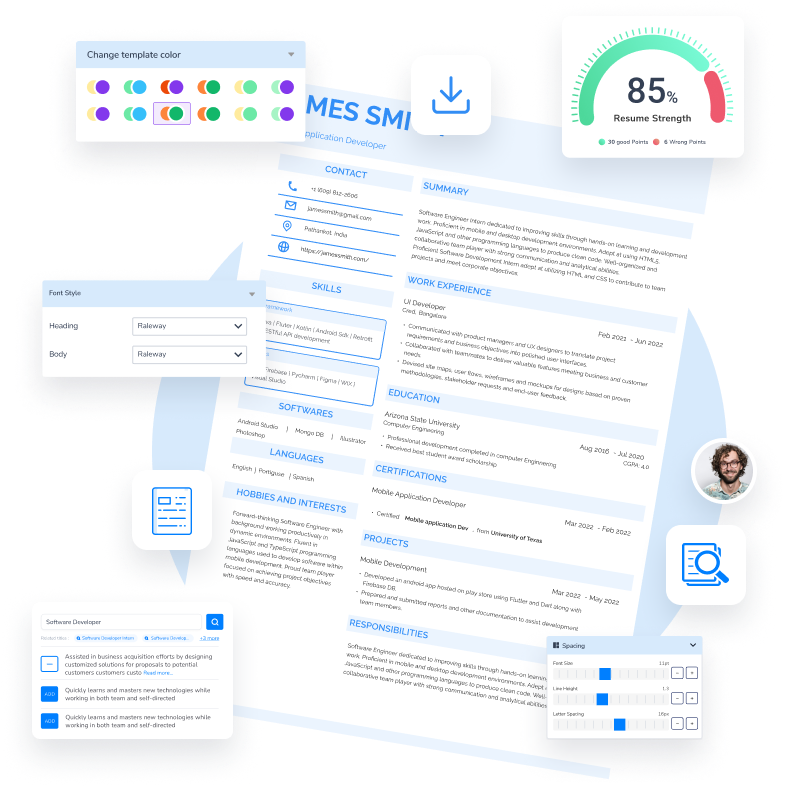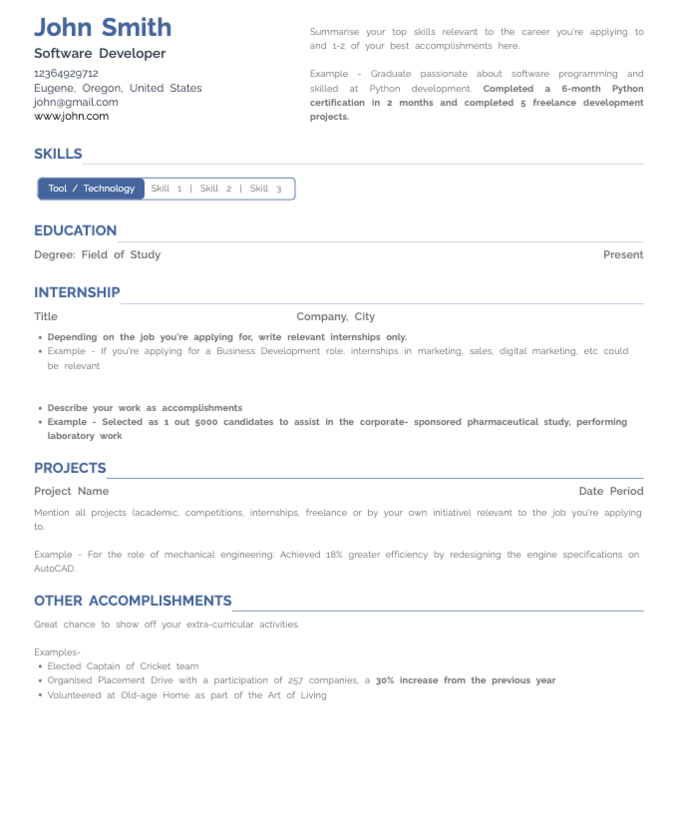Structure of an Ideal Resume for Career Change
3 Min read

Career changes are complicated, and there is typically a lot more to them than meets the eye.
It's not an easy choice, whether you're pursuing a hobby or side business, unsure about leaving your current career for a new one or simply searching for a change.
It necessitates thorough planning and consideration of the why, what, and when.
At some point in your career, you may opt to follow a change professional path in order to better fit your interests and acquired abilities.
A different field may also provide superior rewards, such as more promotion chances or a better work-life balance.
After making this decision, you will likely need to update your CV to remain a competitive job prospect.
Transitions involve more than just changing course. A career change is a lifestyle change that frequently involves revaluating your daily activities, time priorities, and how these relate to your long-term objectives.
Your inner voice whispering that you could do more, be more, experience more, and achieve more is what you should listen for when you sense this urge for change. It may not be tied to a fancier title or more money.
When changing careers, your resume should emphasize the abilities that will help you break into your new field or industry. Here are six stages to writing a resume that will get you hired, even if you lack direct expertise in your new sector of interest.
Because it allows you to focus your relevant and transferable talents over experience, the combo resume style is great for shifting careers.
This immediately tackles the primary obstacle associated with shifting careers: your lack of traditional employment experience in the new field.
Combining the functional and chronological resume forms, this resume emphasizes the skills and accomplishments sections first, then the work experience in reverse chronological order.
The combination style is advantageous if you are changing jobs since it changes the emphasis from work experience to skills you have developed, even if they were acquired in a different field through continuing education, internships, or voluntary work.
By heavily emphasizing these two elements in their application, one can construct a powerful resume to change careers: 1) relevant experience, and 2) transferable talents.
You should take the following five steps to ensure that your job transition resume contains all the details hiring managers are looking for:
You bring specific talents from your prior employment as a career switcher, which increases the appeal of your application to companies. Some of those abilities can be highlighted as examples of professional experience, while others can be stated in your section on competencies.
Use a framework that gives equal weight to valuable work experience and talents.
In this approach, even if you haven't had the official job title, you may demonstrate that you have the necessary industry-transferable skills.
You should either consider composing a resume summary or a resume objective if you are changing careers.
A resume objective gives you the opportunity to concentrate on relevant professional, educational, or volunteer experience, whereas a resume summary allows you to highlight accomplishments that demonstrate skills relevant to the position you're seeking for.
To make their resumes stand out, numerous individuals include objective statements. An objective statement is one or two sentences that outline your career goals and a bit about yourself.
Resume objective statements provide hiring managers with a concise summary of a candidate's qualifications.
An objective statement is a sentence or two near the top of your resume that introduces the company to your goals. With this statement, you explain the reasons for your application and the talents that make you qualified for the position.
Typically, an objective statement follows the name and contact information on a resume. An objective statement can grab the hiring manager's attention quickly and increase the likelihood that they will read the rest of your application papers.
Work experience can be used to emphasize transferable talents.
You can move more easily into a career where you have little to no experience with referring your transferable talents.
Consider your prior work experience that relates to employment in your new industry, and then create bullet points in your experience section that demonstrate those talents in use.
Mention all of your qualifications as you do in a general resume and consider highlighting all the relevant certifications if you have any.
Show off all the achievements that make you stand out from the other people in your race. Also, add the projects you have done in your work period.
Most recruiters are interested in whether you can genuinely perform the tasks specified in the job ad when it comes to the skills area.
Relevance is important, just like it was in the previous parts. Only ever include talents on your resume that are relevant to the position you're going for. Start by reading through the job description to determine what is pertinent.
Most job postings typically contain a list of prerequisites or competencies they hope to see in a qualified applicant.
Therefore, all you need to do is specifically list these talents on your CV.
Having a proper resume is really significant. Create your resume within a few minutes with HyreSnap AI resume maker that helps you with varied templates, summaries, skill sets and sections to describe your achievements, education, experience and many more.
It’s pretty easy to handle and saves a lot of time.

Try Now for Free!










